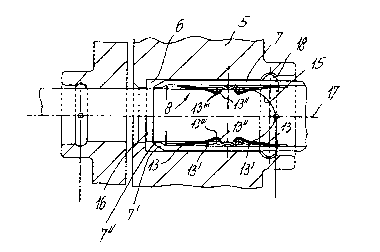Une partie des informations de ce site Web a été fournie par des sources externes. Le gouvernement du Canada n'assume aucune responsabilité concernant la précision, l'actualité ou la fiabilité des informations fournies par les sources externes. Les utilisateurs qui désirent employer cette information devraient consulter directement la source des informations. Le contenu fourni par les sources externes n'est pas assujetti aux exigences sur les langues officielles, la protection des renseignements personnels et l'accessibilité.
L'apparition de différences dans le texte et l'image des Revendications et de l'Abrégé dépend du moment auquel le document est publié. Les textes des Revendications et de l'Abrégé sont affichés :
| (12) Demande de brevet: | (11) CA 2138293 |
|---|---|
| (54) Titre français: | CONNECTEUR ELECTRIQUE |
| (54) Titre anglais: | ELECTRICAL CONNECTOR |
| Statut: | Réputée abandonnée et au-delà du délai pour le rétablissement - en attente de la réponse à l’avis de communication rejetée |
| (51) Classification internationale des brevets (CIB): |
|
|---|---|
| (72) Inventeurs : |
|
| (73) Titulaires : |
|
| (71) Demandeurs : |
|
| (74) Agent: | SMART & BIGGAR LP |
| (74) Co-agent: | |
| (45) Délivré: | |
| (86) Date de dépôt PCT: | 1993-12-09 |
| (87) Mise à la disponibilité du public: | 1994-07-07 |
| Licence disponible: | S.O. |
| Cédé au domaine public: | S.O. |
| (25) Langue des documents déposés: | Anglais |
| Traité de coopération en matière de brevets (PCT): | Oui |
|---|---|
| (86) Numéro de la demande PCT: | PCT/EP1993/003460 |
| (87) Numéro de publication internationale PCT: | WO 1994015380 |
| (85) Entrée nationale: | 1994-12-15 |
| (30) Données de priorité de la demande: | ||||||
|---|---|---|---|---|---|---|
|
For an electrical connector with a socket contact, formed by means of a sleeve body with attachment means for the connecting leads,
for the displaceable reception of a contact pin, where a segmented cage, which can rest pressingly against the pin contact, is housed in the
sleeve body so as to be fixed axially in position, the segmented cage (8) is formed by means of a cylindrically rolled flat sheet metal blank
(9), whose longitudinal outer strips (10) are connected together by means of a number of ribs (11), which extend side by side separated
from each other, the chamfered contact tabs (13), which are opposite one another at the longitudinal outer strips (10), project into the free
spaces (12) between the ribs (11), whereby a first segment (13') of said contact tab curves in the direction of the central longitudinal axis
of the segmented cage (8) and whereby a second segment (13"), formed by means of the free ends, is bent back and is shorter than half
the length of the segmented cage (8), in order to ensure a reliable and effective contact.
Note : Les revendications sont présentées dans la langue officielle dans laquelle elles ont été soumises.
Note : Les descriptions sont présentées dans la langue officielle dans laquelle elles ont été soumises.

2024-08-01 : Dans le cadre de la transition vers les Brevets de nouvelle génération (BNG), la base de données sur les brevets canadiens (BDBC) contient désormais un Historique d'événement plus détaillé, qui reproduit le Journal des événements de notre nouvelle solution interne.
Veuillez noter que les événements débutant par « Inactive : » se réfèrent à des événements qui ne sont plus utilisés dans notre nouvelle solution interne.
Pour une meilleure compréhension de l'état de la demande ou brevet qui figure sur cette page, la rubrique Mise en garde , et les descriptions de Brevet , Historique d'événement , Taxes périodiques et Historique des paiements devraient être consultées.
| Description | Date |
|---|---|
| Inactive : CIB de MCD | 2006-03-11 |
| Le délai pour l'annulation est expiré | 1996-06-09 |
| Demande non rétablie avant l'échéance | 1996-06-09 |
| Réputée abandonnée - omission de répondre à un avis sur les taxes pour le maintien en état | 1995-12-11 |
| Inactive : Demande ad hoc documentée | 1995-12-11 |
| Demande publiée (accessible au public) | 1994-07-07 |
| Date d'abandonnement | Raison | Date de rétablissement |
|---|---|---|
| 1995-12-11 |
Les titulaires actuels et antérieures au dossier sont affichés en ordre alphabétique.
| Titulaires actuels au dossier |
|---|
| FRAMATOME CONNECTORS INTERNATIONAL |
| Titulaires antérieures au dossier |
|---|
| GUSTAV HOPF |